Best point-and-shoot camera 2024: top picks for simple shooting
The best point and shoot cameras for phone-beating snaps
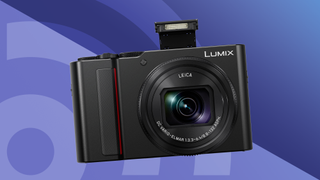
Modern smartphones put an excellent camera in every pocket, but there’s still a market for the best point-and-shoot cameras. We’ve tested a range of point-and-shoots. You’ll find our favorites in the list below, and each has something unique that sets it apart from the best camera phones – whether that’s a long optical zoom, a rugged build or a large sensor.
If we had to pick one point-and-shoot for ourselves, it would be the Panasonic TZ200, with its versatile 15x optical zoom. That said, you’ll find a lot of variety in the models featured below. The aim of our guide is to recommend a point-and-shoot suitable for every type of photographer, whether that’s an instant camera or a pocket-friendly superzoom.
We review every point-and-shoot in real-world conditions, to test how well it will perform for genuine users. We assess everything from build quality and ease of use, to stabilization and overall image quality. We’ve summarized the results of our reviews in this list, to help make your decision easier.
Top 3 picks
If you want a shortcut to the best point-and-shoot cameras, our quick summary below will give you an overview of the top options for every budget. When you find one that fits the bill, use the links beneath to jump down to our full write-up.
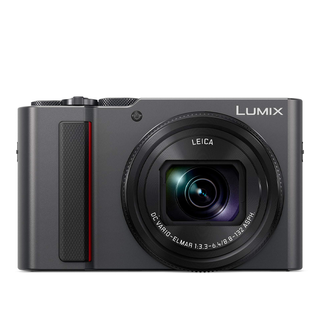
Best overall
A feature-packed point-and-shoot that offers incredible zoom range and great image quality, all in a usefully compact body.
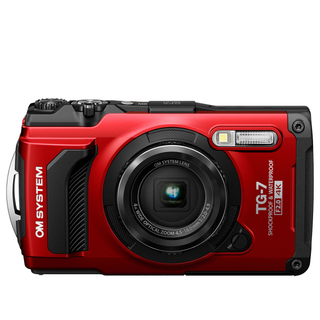
Best rugged
Simple enough for beginners, this tough point-and-shoot can be taken almost anywhere without fear of it being damaged.
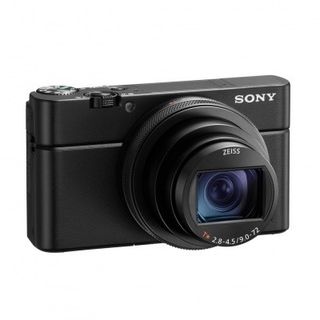
Best premium
It doesn't come cheap, but this high-end point-and-shoot produces high-quality images and detailed 4K videos with its 1-inch sensor.
Best by use case
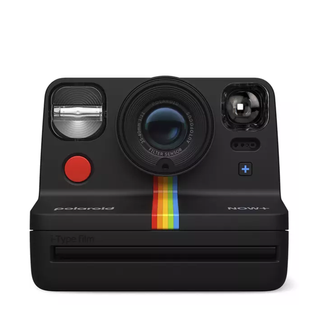
Best instant
A versatile instant camera, this fun point-and-shoot makes it easy for anyone to shoot creative prints, including kids.
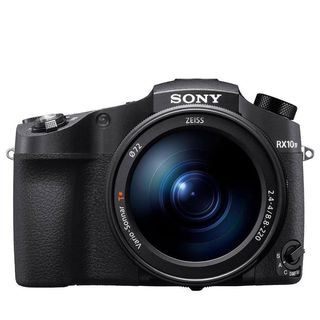
Best bridge camera
For those who want more from their compact camera, the RX10 Mark IV goes further with its fast 24-600mm lens.
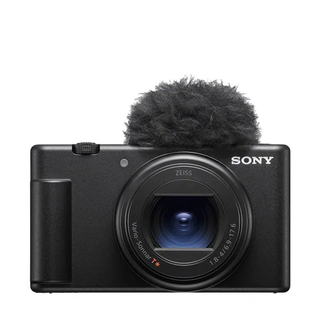
Best video
Not a huge upgrade, but with a tilting screen, reliable autofocus and Cinematic Vlog setting, this is a 4K hybrid with a lot to offer.
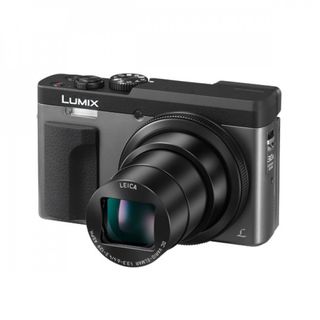
Best compact super-zoom
A 24-720mm f/3.3-6.4 zoom lens provides a huge zoom range with a more than respectable f-stop range.
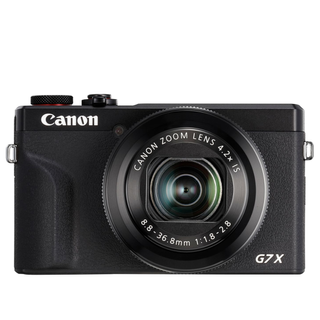
Best for Canon fans
In a saturated market, this Canon option boasts a fantastic lens and a range of specific features for videographers.
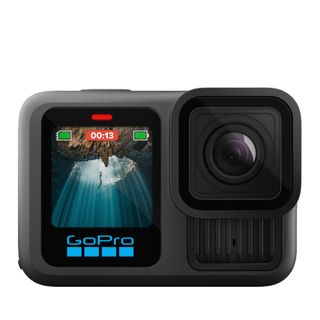
Best action
A capable action cam with a point-and-shoot interface, GoPro's latest flagship makes it easy to shoot smooth, action-packed 10-bit video.

Tim is TechRadar’s Cameras Editor. He’s spent more than 15 years working in the photo video industry, as both a photographer and tech journalist. Tim has tested a huge range of cameras, including many of the best point-and-shoots featured here. He notes, “The point-and-shoot market has undeniably been decimated by the rise of quality smartphone cameras. That said, as the models listed here should illustrate, the market is still healthy 2024 – fuelled in part by the viral popularity of models such as the Nikon Coolpix S6900.”
The best point-and-shoot cameras in 2024
Why you can trust TechRadar
Below you'll find full write-ups for each of the best point-and-shoot cameras in our list. We've tested each one comprehensively, so you can be sure that our recommendations can be trusted.
The best point and shoot camera overall





Specifications
Reasons to buy
Reasons to avoid
Panasonic Lumix TZ200 sample images

Click here to see the full-size image

Click here to see the full-size image

Click here to see the full-size image

Click here to see the full-size image

Click here to see the full-size image
✅ You want a travel point-and-shoot: Despite its small proportions, the ZS200/TZ200 pairs a 1-inch sensor with a huge 15x optical zoom range.
✅ You want a feature-packed camera: The ZS200/TZ200 offers premium features not found on other point-and-shoots, including 4K video and a sharp EVF.
❌ You want a budget point-and-shoot: While its feature set makes this a high-value camera, it's far from the cheapest option in this list.
❌ You like to use different focal lengths: The fixed 23mm focal length is a calling card of the X100 series, but some will find it too limiting.
We think the Panasonic Lumix ZS200/TZ200 is the best travel zoom point-and-shoot you can buy. One of the key features that sets it apart from many point-and-shoots is its large 1-inch sensor, which is much larger than the sensor found in most smartphones. And while other compacts do have 1-inch sensors, few pair it with such a far-reaching lens. With an equivalent reach of 24-360mm, we found the 15x optical zoom incredibly useful in our review for framing subjects from a long way off.
Being a Panasonic camera, the ZS200/TZ200 is also crammed full of excellent features: a 3-inch touchscreen, 2.3 million-dot EVF and 4K video recording up to 30fps. The drawback? Well, of course, you do pay for all of this power. If this model is a bit too pricey for you, look out for deals on its ZS100/TZ100 predecessor. But for a point-and-shoot all-rounder with good image quality, you still can't do better than this without spending megabucks on the Sony RX100 VII (see below).
- Read our in-depth Panasonic Lumix ZS200 / TZ200 review
The best rugged point and shoot camera





Specifications
Reasons to buy
Reasons to avoid
OM System Tough TG-7 sample images




✅ You want a rugged point-and-shoot: Dropped in sand or submerged in the sea, the toughest point-and-shoot in this list is completely family-proof.
✅ You take mainly photos: The Tough TG-7 offers useful features for shooting stills, including macro modes and white-balance adjustments.
❌ You want the best image quality: Its rugged credentials are what set the Tough TG-7 apart, with image quality falling behind many modern smartphones.
❌ You want a touchscreen interface: While physical controls make the Tough TG-7 an easy camera to handle, its rear LCD isn't a touchscreen.
The OM System Tough TG-7 is exactly what you want in terms of a point-and-shoot. Take it on your travels, throw it in your bag, and even give it to your kids. Wherever you take it and whatever you do with it, you can rest assured that it'll withstand all the knocks and scrapes along the way. As well as being rugged, the Tough TG-7 is also waterproof with an IPX8 rating, making it perfect not only for rainy days but also for submerging up to 15m underwater.
The camera has a 1/2.3-inch BSI CMOS sensor, which produces 12MP images. Video resolution goes up to 4K at 30 fps, and if you want slow motion, you have the option of 60 fps at 1080p. Even though this camera can't deliver sharp, cinematic video, you'll still be guaranteed fair-quality, usable footage. Even though some smartphones have better optics, the Tough TG-7 does a unique job of breaking down the barrier between you and nature, encouraging you to get out and about more than ever.
- Read our in-depth OM System Tough TG-7 review
The best premium point and shoot camera





Specifications
Reasons to buy
Reasons to avoid
Sony RX100 VII sample images

Click here to view the full-size image

Click here to view the full-size image

Click here to view the full-size image

Click here to view the full-size image

Click here to view the full-size image
✅ You want a premium point-and-shoot: With a 1-inch sensor, impressive autofocus and useful manual controls, this is a high-end camera.
✅ You plan to shoot video: The RX100 VII can record high-quality 4K video footage with face detection, which isn't true of every point-and-shoot.
❌ You have a limited budget: Even several years after its launch, the Sony RX100 VII remains a very expensive point-and-shoot camera.
❌ You only need a simple camera: The RX100 VII is one of the most advanced point-and-shoot cameras you can buy, with a price tag to match.
Sony's RX100 series has long been the pinnacle of premium compact cameras and the RX100 VII is the series' high water-mark. It's practically bursting with features, but the key one for its point-and-shoot usability is its class-leading autofocus. This means it can reliably track moving subjects like speeding pets or lock onto people with its Face/Eye AF mode, which means you can simply focus on composition.
The RX100 VII is also a pretty dab hand at video too, offering detailed 4K footage with minimal rolling shutter and handy features like a microphone jack. Aside from its price tag, we found that this camera's only real downsides are its lack of touchscreen functionality and a fairly average battery life. Some may also prefer the handling and shooting experience of the Canon PowerShot G7X Mark III (see no.7 below). But otherwise this is the best money-no-object compact camera around.
- Read our in-depth Sony RX100 VII review
The best instant point and shoot camera





Specifications
Reasons to buy
Reasons to avoid
Polaroid Now+ sample images





✅ You want a great instant camera: The Polaroid Now plus combines point-and-shoot convenience with the fun of instant analogue prints.
✅ You like to experiment creatively: With lens filters and creative photography tools in the partner app, there's plenty here to play with.
❌ You want a really portable camera: It might offer point-and-shoot simplicity, but the Now+ is a pretty bulky camera compared to the compacts in this list.
❌ You don't want to spend on film refills: Because of the relatively high price of film packs, the Now+ comes with relatively high running costs.
Instant cameras are some of the most affordable point-and-shoots around – and we think the Polaroid Now+ is the most user-friendly model you can buy. This is largely thanks to its built-in autofocus, which we found to be mostly reliable in our tests and reduce your number of throwaway shots. But unusually for an instant camera, the Now+ also has built-in Bluetooth and a companion smartphone app, which brings some extra creative shooting modes that lift it beyond its rivals.
If you don't need this extra versatility, which lets you dabble with double exposures and manual shooting, then the standard Polaroid Now is also worth considering. It's also worth bearing in mind that the cost of this camera's Polaroid I-Type film can add up. But the flipside is that you get good-sized prints from a super-versatile instant camera that we think is also the best point-and-shoot of its kind.
- Read our in-depth Polaroid Now+ review
The best point and shoot bridge camera





Specifications
Reasons to buy
Reasons to avoid
Sony RX10 Mark IV sample images
✅ You want incredible zoom range: With an optical zoom range equivalent to 25x, the 24-600mm f/2.4-4 lens offers impressive performance throughout.
✅ You want a really versatile point-and-shoot: From a tilting touchscreen to image stabilization, the RX10 IV is absolutely packed with photography features.
❌ You want a pocket-friendly camera: There's no escaping that the RX10 IV is bigger and heavier than many of the point-and-shoots in this list.
❌ You want full touchscreen control: Touchscreen functionality is welcome, but can't be used to navigate menus or swipe through images.
The Sony RX10 IV is still one of the most versatile and capable cameras around, and redefined what we could expect from a point-and-shoot camera. It's a weather-sealed bridge camera packing a 25x optical zoom with 24-600mm coverage, supported by excellent stabilization and the larger-type 1-inch sensor. In our review, we found that both stills and video look great at pretty much any setting.
Because it's a bridge camera, it's inherently larger and heavier than the more compact options in this list. It also suffers from the limited touchscreen controls that inhibit slightly older Sony cameras. On the other hand, it benefits from a tilting display and EVF, both of which we found useful in testing. Its autofocus system also impressed, with the option to shoot at up to 24fps with continuous metering and continuous AF – and that's in raw mode, too. Add a mic input and headphone jack into the mix and the RX10 IV still stacks up as a powerful point-and-shoot today.
- Read our in-depth Sony RX10 Mark IV review
The best point and shoot camera for video





Specifications
Reasons to buy
Reasons to avoid
Sony ZV-1 II sample video
✅ You want a compact video tool: A point-and-shoot with 4K recording, a Cinematic Vlog setting and vari-angle display, the ZV-1 II does video well.
✅ You want a pocket-sized hybrid: With a 18-50mm f/1.8-4.0 equivalent lens and intuitive touchscreen, the ZV-1 II is a solid all-in-one smartphone upgrade.
❌ You already have the ZV-1: A refinement rather than a major change, the ZV-1 II doesn’t introduce enough improvements to justifying upgrading.
❌ You want the best stabilization: There’s no in-body image stabilization, only Sony’s Active electronic stabilization, which crops in on the sensor.
Like the original, the ZV-1 II is a pocket-sized hybrid with a feature set that leans towards video. It shares the same sensor and processor as the first version, which means you still get decent 4K/30p footage that’s more than good enough for social sharing. In testing, we found its 18-50mm equivalent zoom range more versatile for both stills and video, with an f/1.8 aperture at the wide end producing lovely bokeh. We also thought the improved touchscreen interface felt more intuitive for anyone upgrading from a smartphone.
As with the ZV-1, we were impressed with autofocus performance in testing, with the useful addition of animal recognition in video mode. There are still several drawbacks here, including the lack of headphone jack and in-body image stabilization, as well as a battery life limited to 45 minutes. The ZV-1 also represents better value objectively, given the limited upgrades here. But if you want a compact option for covering a lot of bases, the ZV-1 II gets a lot right.
- Read our in-depth Sony ZV-1 II review
The best point and shoot camera for compact super zoom
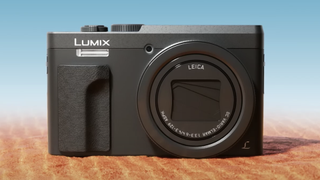
Specifications
Reasons to buy
Reasons to avoid
Panasonic Lumix ZS70 / TZ90 sample images










✅ You want a huge zoom range: With a focal length of 24-720mm, the ZS70 / TZ90 has a huge 30x optical zoom range, putting it ahead of almost every point-and-shoot.
✅ You appreciate extra features: From its 3-inch tilting touchscreen to five-axis image stabilization, the ZS70 / TZ90 is a feature-packed point-and-shoot.
❌ You want a large viewfinder: While many point-and-shoots don't have a viewfinder at all, the ZS70 / TZ90's 0.2-inch viewfinder is still on the small side.
❌ You'll shoot wide angles a lot: Its zoom range offers incredible versatility, but results can look a bit soft when shooting at its widest angle.
The ZS70 / TZ90 is another camera of the travel-zoom point-and-shoot genre which Panasonic pioneered. Equipped with 30x optical zoom and a 24-720mm focal range, supported by a five-axis image stabilization, we found it a very effective combination in our review. There are similar cameras with bigger zooms, but in our tests we found the TZ90 offers the most well-rounded package.
Key features include the lovely 3-inch touchscreen that tilts up for an intuitive selfie mode. Unlike many models in this list, you also get a 0.2-inch viewfinder. It's on the small side and you'll err towards the lovely touchscreen instead, but most other cameras at this level (and smartphones) simply don't have a viewfinder at all, so the option is very welcome. The TZ90 can also shoot in raw format and offers in-camera raw editing. With impressive 4K video quality too, the ZS70/TZ90 represents excellent value for money.
- Read our in-depth Panasonic Lumix TZ90/ZS70 review
The best point and shoot camera for Canon fans

Image credit: TechRadar

Image credit: TechRadar

Image credit: TechRadar

Image credit: TechRadar

Image credit: TechRadar
Specifications
Reasons to buy
Reasons to avoid
Canon PowerShot G7 X Mark III sample images

Click here for the full-size image

Click here for the full-size image

Click here for the full-size image

Click here for the full-size image

Click here for the full-size image

Click here for the full-size image
✅ You want a tidy all-rounder: While it doesn't excel in any one area, the G7 X Mark III impresses with a strong set of features and decent performance.
✅ You plan to shoot raw: Unlike a lot of point-and-shoot cameras, the G7 X Mark III offers in-camera raw editing and a 30fps Raw Burst mode.
❌ You want a viewfinder: Though it has a lot of other features, the PowerShot G7 X Mark III doesn't have a built-in electronic viewfinder.
❌ You need a hotshoe for accessories: Also missing from the spec sheet is a hotshoe, which means you can't add accessories such as external microphones.
PowerShot is Canon's sub-brand for its point-and-shoot camera range and, alongside the pricier Canon PowerShot G5 X Mark II, this is one of its best to date. Both cameras have 1-inch 20MP sensors and touch-sensitive flip-screens, with the main difference between the two (other than price) being the lack of an electronic viewfinder on the G7 X Mark III. For point-and-shoot fans, this setup should be fine, but the G5 X Mark II is another solid option if you do need that viewfinder.
The G7 X III does also have a few other video-related tricks up its sleeve that you don't find on its more expensive sibling. The main one is the ability to livestream directly to YouTube, but it also has a microphone input for improved audio quality. We did find the AF system slightly dated in testing – and not quite up to Sony's RX100 series – but otherwise the G7 X III is still a decent, video-focused compact with excellent image stabilization.
- Read our in-depth Canon PowerShot G7X Mark III review
The best point and shoot camera for action





Specifications
Reasons to buy
Reasons to avoid
GoPro Hero 13 Black sample footage
✅ You want an adventurous video tool: The Tough TG-7 is more rugged, but the GoPro Hero 13 Black excels as a waterproof 5.3K video camera.
✅ You plan to shoot vlogs: Thanks to an 8:3 sensor and excellent video stabilization, the Hero 13 Black makes it easy to shoot and export stable video for social.
❌ You want a classic point-and-shoot: Its small build makes it easy to mount anywhere, but doesn't offer the handling of a 'traditional' camera.
❌ You want to shoot in low lighting: The same relatively small sensor means it struggles in low light, outclassed by 1-inch alternatives in this list.
The GoPro Hero 13 Black isn't your typical point-and-shoot, but it’s still a great option for shooting action-packed footage out of your pocket. In many ways, it’s the same as the Hero 12 Black: it has the same 8:7 aspect ratio sensor with the same resolution, and shoots the same superb 5.3K video. Our tests also found that it suffers from some of the same drawbacks, including image quality that suffers in low light. It’s also true that the Hero 12 Black is better value.
What the Hero 13 Black does is refine the recipe to be GoPro’s most convincing point-and-shoot for action. A new fitting automatically detects Lens Mods and changes settings to suit, and also supports ND filters. Both of these features make it a much more creative tool to shoot with, and the Macro Lens Mod in particular makes the GoPro into a better vlogging tool. You also get useful magnetic mounting and better battery life. Factor in an intuitive interface and the Hero 13 Black is a polished point-and-shoot.
- Read our in-depth GoPro Hero 13 Black review
Also consider
We've reviewed a lot more point-and-shoots than the ones included in this shortlist. There are several of honorable mentions we'd suggest considering.
Panasonic Lumix LX100 II: If you're a hobbyist photographer looking for a tiny but capable point-and-shoot, the Panasonic Lumix LX100 II should definitely be on your shortlist. It squeezes a Micro Four Thirds sensor into a compact body, together with a 24-75mm f/1.7-2.8 lens. You don’t get a tilting touchscreen, but the feature list is otherwise generous.
Pentax 17: A point-and-shoot with a difference, the Pentax 17 is a leader of the analog revival. Its simple interface makes it easy to capture half-frame stills on 35mm film. It’s build feels a little cheap, but some neat design features and a clever viewfinder make it fun to shoot with. You might find its price a little steep, though.
Ricoh GR III: Styled like a classic point-and-shoot, the Ricoh GR III features a large APS-C sensor and a sharp, 28mm-equivalent f/2.8 prime lens. It’s a fast camera capable of very good detail, with an effective Shake Reduction system that makes it a great choice for quick street photography, as long as you don’t need the flexibility of a zoom lens.
The best point and shoot camera for hobbyists




Specifications
Reasons to buy
Reasons to avoid
Panasonic Lumix LX100 II sample images

Click here to see the full-size image

Click here to see the full-size image

Click here to see the full-size image

Click here to see the full-size image

Click here to see the full-size image

Click here to see the full-size image
✅ You want a large sensor in a small body: Its Micro Four Thirds sensor is the largest on this list, yet it still has the compact proportions of a classic point-and-shoot.
✅ You want a capable second camera: If you want a point-and-shoot alternative to your main camera, the LX100 II is packed with high-end features.
❌ You want a tilting touchscreen: Touch functionality is useful, but the screen is fixed in place, which makes it trickier to shoot from the hip.
❌ You like a simple interface: Because it has so many features, navigating the touchscreen icons and menu system can take some practise.
If you're a hobbyist photographer looking for a tiny but capable point-and-shoot, the Panasonic Lumix LX100 II should definitely be on your shortlist. Its USP is a Micro Four Thirds sensor: the same format used in Lumix G mirrorless cameras, it's almost twice the size of the 1-inch sensors found in other point-and-shoots here. That's impressively squeezed into a compact body, together with a 24-75mm f/1.7-2.8 lens. While the 3.1x optical range is limited, we found its fast aperture gave excellent control over depth of field – something many smartphones can only achieve digitally.
Our review found the viewing experience good, with a high-quality 2.76-million dot EVF – though sadly the rear touchscreen is fixed. We'd love a tilt function for waist-level viewing, especially when out-and-about doing reportage photography. That being said, every choice from design to features makes the LX100 II ideal for photography enthusiasts, and it's all found in an impressively compact package.
- Read our in-depth Panasonic Lumix LX100 II review
How to choose the best point and shoot camera
Which brand of point-and-shoot is the best?
Traditionally, the best point-and-shoot camera brands have been Panasonic, Sony, and Canon. And while all three have largely stopped making budget models due to the rise of smartphones, they collectively make the best user-friendly, pocketable cameras you can buy (outside of the phone world).
This is reflected in our list above. What Lumix, Cyber-shot and Powershot cameras lack in computational photography skills, they more than compensate for with high-quality optics, large sensors, handling and, in some cases, impressive zooms. Sony, Panasonic and Canon also make the best bridge cameras around.
If you have a more specialist need, like a super-rugged cameras for stills or video, that's when other brands come into play. Olympus (now OM System) has great heritage with its Tough series, currently topped by the TG-6. And GoPro continues to be the best point-and-shoot experience around for video creators who need some rugged and waterproof for outdoor adventures.
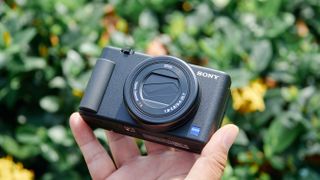
What is the biggest drawback of point-and-shoot cameras?
Nearly all point-and-shoot cameras were made in a time before the rise of smartphone computational photography, which really started taking off with the Google Pixel 4 in 2019. This kind of image processing, which involves intelligently combining multiple frames, was fueled by super-powerful mobile chipsets that simply aren't available to the traditional camera brands, whose heritage is instead in hardware and lens design.
This means that the biggest drawback of point-and-shoot cameras, compared to phones, is their lack of in-camera processing. The photos they produce are often more natural as a result, lacking the saturated or hyper-real HDR look that some phones tend to prefer by default. But point-and-shoot cameras can also struggle to match the balanced shots that phones manage when they effectively stack multiple exposures of the same scene.
You can achieve similar effects yourself by shooting in raw and editing the images later using software like Photoshop or Snapseed, but this is less of a point-and-shoot experience. This means that point-and-shoot cameras often fair worse than smartphones in challenging lighting conditions, but can still outshine them when you play to their strengths (for example, when using optical zoom on distant subjects, or a bright lens to produce natural bokeh).
Meet the team
Our team of reviewers has amassed many years of camera experience and testing, covering all of the latest and greatest cameras in the last 20 years, and can all appreciate the benefits of a dedicated camera like a digital compact versus simply using a smartphone.

Tim is TechRadar's Cameras Editor and has been cutting his teeth in the photo and video industry for almost 20 years. He looks after all of TechRadar's cameras content, covering buying guides, features, reviews and news. He knows the benefits of purposeful creativity with a dedicated camera instead of a smartphone.

Rod is an independent photographer and photography journalist with more than 30 years' experience. He's previously worked as Head of Testing for Future’s photography magazines, including Digital Camera, N-Photo, PhotoPlus, Professional Photography, Photography Week and Practical Photoshop, and as Reviews Editor on Digital Camera World.
Matt has written and reviewed cameras for just about every leading photo publication, including Digital Camera World (where he was Editor), What Digital Camera, WEX and of course TechRadar.

Mark is TechRadar's Senior news editor and has been a technology journalist since 2004. Formerly Trusted Reviews and TechRadar's cameras editor, Mark has tested cameras over many years from all of the leading brands.

James Abbott is a professional photographer and freelance photography journalist. He contributes articles about photography, cameras and drones to a wide range of magazines and websites where he applies a wealth of experience to testing the latest photographic tech.

Paul is a digital expert. In the 20 years since he graduated with a first-class honours degree in Computer Science, Paul has been actively involved in a variety of different tech and creative industries that make him the go-to guy for reviews, opinion pieces, and featured articles. You'll also find his writing in other places, including Creative Bloq, Digital Camera World, and 3D World Magazine.
How we test point and shoot cameras
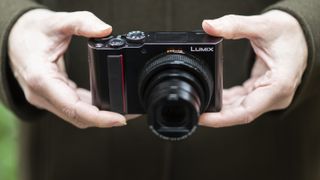
☑️ 100s of cameras reviewed
☑️ 15 years of product testing
☑️ Over 16,000 products reviewed in total
☑️ Nearly 200,000 hours testing tech
Real-world tests are the most revealing way to get under the skin of the best point-and-shoot cameras. So alongside with standardized tests for factors like ISO performance, we take every camera we test for a spin to see how it fares in real-world scenarios.
We'll use it both handheld and, if possible, on a tripod to get a sense of where its strengths lie, and test its startup speed. We also use a formatted SD card and shoot in both raw and JPEG (if available), testing its burst shooting and buffer performance.
For autofocusing, we use the different autofocus modes on hand in single point, area, and continuous modes. Naturally, we take a look at how accurate and reliable its metering is, how well it handles noise, and how well it minimizes things like fringing and distortion. Its video shooting skills are tested as well by shooting some test footage at different frame-rates and resolutions.
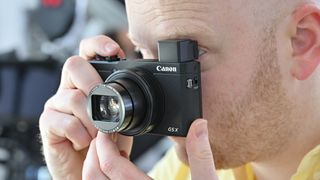
We also look at the camera's design, handling, and user interface while getting a sense of what kind of photographer it's most ideal for. Battery life is tested as well over the course of the day with the screen set to the default settings. Once the battery has reached zero, we'll then count the number of shots to see how it compares to the camera's CIPA rating.
Once all is said and done, we take all our data and everything we've learned about the point-and-shoot camera and compare it to its price tag to see if it offers great value for your money.
Get the best Black Friday deals direct to your inbox, plus news, reviews, and more.
Sign up to be the first to know about unmissable Black Friday deals on top tech, plus get all your favorite TechRadar content.

Tim is the Cameras editor at TechRadar. He has enjoyed more than 15 years in the photo video industry with most of those in the world of tech journalism. During his time as Deputy Technical Editor with Amateur Photographer, as a freelancer and consequently editor at Tech Radar, Tim has developed a deeply technical knowledge and practical experience with cameras, educating others through news, reviews and features. He’s also worked in video production for Studio 44 with clients including Canon, and volunteers his spare time to consult a non-profit, diverse stories team based in Nairobi. Tim is curious, a keen creative, avid footballer and runner, and moderate flat white drinker who has lived in Kenya and believes we have much to enjoy and learn from each other.
- Mark WilsonSenior news editor
- Chris Rowlands